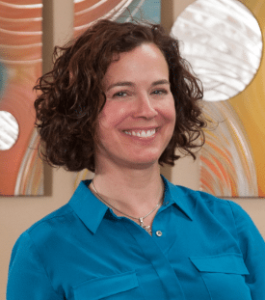The Science Behind Your Smile – Part 1
October 14, 2015By Leslie Pitner, DDS
We can paint it, smooth it, tighten it, or fill it, but without resorting to a paper bag, we cannot hide it. We take our face with us whenever we go and too often it reveals more than we would like. Some can succeed in the World Series of Poker or tense diplomatic discussions, but others of us are an open book. I am an unwilling member of the latter group. My thoughts and feelings are so clear and obvious that I was once told by a professor that he always looked at me to see how he was doing and if the class understood his lecture. But this was no small seminar. It was a class of over 200 people and I sat squarely in the middle to back of the room. What was my professor looking for? He was reading my facial expressions — my frown of confusion, grimace of boredom, and the smile when everything began to click.
Our faces are controlled by 43 muscles and 10 nerves, taking up a disproportionate amount of real estate in the brain and proportion of muscles in our body. In the design of the human animal, our face is the focal point. With those 43 muscles, we can make over one thousand different subtle facial expressions. Facial expressions are central to how we communicate with each other, with almost as many complications as language. While our faces can make a huge number of different subtle expressions, there are a few fundamental expressions representing basic emotions such as anger, sadness, disgust, surprise, and joy.
Before we can speak, we use our faces to communicate. It is a simple universal language. Yet prior to the nineteenth century, any examination of our faces and their expressions were the province of the artist. Facial expressions were too ephemeral to be the subject of serious scientific study. A scientist, however, in the mid-nineteenth century finally took on the face as a subject that could be broken down and understood by science.
Let’s take a quick trip to France – In an artists’ studio/physiology lab, a somewhat mad scientist has an elderly man with electrodes hooked up to his face. The scientist has carefully placed the electrodes so that, when activated, each will activate one single facial muscle. The electrodes are activated, the man’s muscles spasm, and a photograph is quickly taken of the resulting facial expression. Who is this mad scientist and his unfortunate subject? Guillaume Duchenne was one of Europe’s first and most prominent neurologists. Among his many accomplishments was the discovery of the disease muscular dystrophy in the 1860s. From his work as a physician, Duchenne became interested in studying the muscles responsible for facial expression, but for reasons far beyond neurology. Duchenne was an avid observer of the visual arts, particularly painting, and he wanted to use science to teach artists how to depict more accurate facial expressions in their works. He put together a book with his photos, but few copies of his book were initially printed. His remarkable contribution to our understanding of the human face was not widely available until an English translation (including photographs) was published in 1990.
Dr. Duchenne made a significant contribution to our understanding of facial expressions, and particularly the smile. He was the first to systematically investigate what muscles were involved in making each individual expression. Almost as an accident he found that physiologically there are two distinct types of smiles. He found that what we recognize as an authentic smile arises from the activation of not only the zygomatic (cheek raising) muscle, but also the orbicularis oculi muscles of the eyes, so that the person not only shows his teeth, but also has a distinctive crinkling around the eyes (they’re not called laugh lines for nothing!) {Duchenne de Boulogne, 1990 #380}. Activating only the zygomatic muscles causes the person to show his teeth in a grin and bear it manner, but it is not the spontaneous smile elicited by a joke or a pleasurable experience. Even though Duchenne’s work was lost over a century, he has been memorialized for his discovery of the authentic smile. The authentic smile with the activation of both the zygomatic and orbicularis oculi muscles is now dubbed the Duchenne smile.
The smile is one of these basic expressions with a very unique distinction — it is the only facial expression that represents all of the good feelings such as happiness, pleasure, excitement, and joy. For this reason alone, the smile plays a singular role in our emotions and communication with others.
About Dr. Leslie Pitner
Dr. Pitner has built a reputation as one of the most innovative orthodontists in the Southeast. Her practice, Pitner Orthodontics, serves the Columbia and Chapin communities, but she has patients coming from all over the US. Leslie Pitner majored in art and received her undergraduate degree from Williams College in 1990. She completed her master’s degree in art history at the University of Pennsylvania in 1995. She then attended the University of North Carolina School of Dentistry and graduated with honors. Her training in art directly translates to her orthodontic practice by allowing her to utilize her eye for beauty and detail and bring that passion to each patient’s smile.
While in practice, Dr. Pitner completed a unique master’s degree program in positive psychology at the University of Pennsylvania. She uses this element of her education to encourage patients to grow in their strengths through the challenges of orthodontics and enjoy the positive power of a smile. Dr. Pitner has broad interests from traveling and public speaking to driving her own race-car. www.drpitner.com














